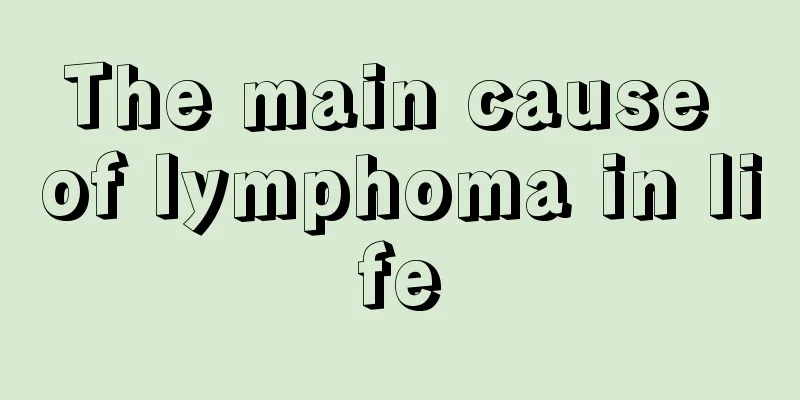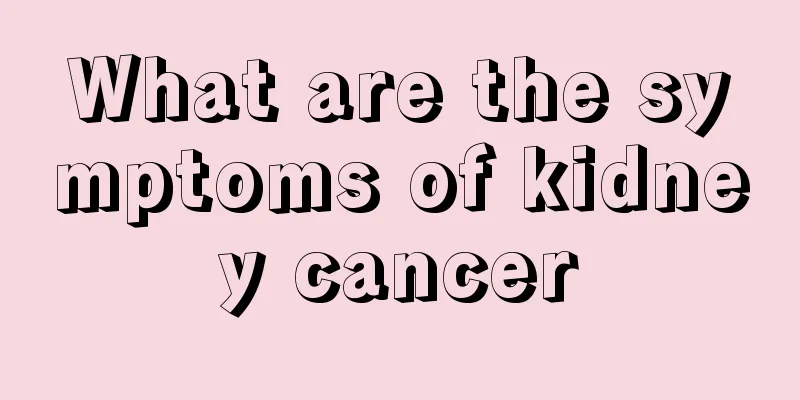The drug of choice for treating meningococcal meningitis is

|
The brain is a relatively important organ. It can be said that the brain understands the entire body. If there is a problem with the brain, the whole person will be affected, and in severe cases it may be life-threatening. Therefore, brain problems must be treated promptly. Meningococcal meningitis is a relatively serious disease that requires timely treatment, otherwise it will affect our health. So, the first choice for treating meningococcal meningitis is surgery? General treatment of meningococcal disease 1. Treatment In the past, this disease was mainly treated with sulfonamides. Since the 1960s, there have been reports of epidemics caused by sulfonamide-resistant strains of meningococci, first group B, then group A and group C, and the resistance rate has continued to increase. In Europe, 48.3% of Nm are resistant to sulfonamides, among which more than 70% of strains in Romania, Spain and France are resistant to sulfonamides. In Europe, there are not many strains resistant to penicillin and rifampicin, accounting for 0.8% and 0.2% respectively. The results of monitoring in my country also show that there are many strains that are resistant to sulfonamides; 10% to 29.8% of the strains are resistant to sulfamethoxazole, and in some areas the rate is as high as 50%. The second most common strains were resistant to acetylspiramycin, accounting for 22.9%. No strains resistant to chloramphenicol have been found, and strains resistant to penicillin are also rare, so penicillin should be the first choice for meningococcal infection. 1. Common treatment (1) General treatment: The ward should be quiet and well-ventilated. The diet should be liquid and appropriate fluid intake should be given. In the early acute phase, the amount of fluid should be limited to 1200-1500 ml/d. If necessary, feeding can be done through a nasogastric tube. Closely observe changes in the condition. Those who are unconscious should receive enhanced care, such as protecting the cornea to prevent ulcer formation, keeping the skin clean, and frequently changing body positions and patting the back to prevent bedsores and respiratory infections. Avoid aspiration in case of vomiting. Prevent tongue biting during convulsions. Give oxygen if breathing is difficult. (2) Pathogen treatment The concentration of penicillin in cerebrospinal fluid is generally 10% to 30% of the blood concentration. Injection of ordinary doses cannot make the content in the cerebrospinal fluid reach an effective bactericidal concentration, but injection of large doses can make the drug in the cerebrospinal fluid reach an effective concentration, and the treatment effect is satisfactory. The dosage of penicillin for adults is 200,000 to 300,000 U/(kg?d), and for children it is 100,000 to 250,000 U/(kg?d). The divided dose should be given as a push injection (penicillin G) or rapid intravenous drip every 2 to 3 hours. If penicillin is slowly dripped intravenously, its peak concentration will be lower than that of intermittent rapid injection, so slow drip is not suitable. If the diagnosis is confirmed, no other antibiotics are needed; penicillin alone is sufficient to control the infection. Intrathecal penicillin injection may cause serious reactions such as fever, convulsions, subarachnoid adhesion obstruction, myelitis and lower limb pain, so it should not be used. Meningococci are generally highly sensitive to penicillin, with a minimum inhibitory concentration of <0.03 mg/L. However, in recent years, group B and group C meningococci have begun to develop low-level resistance to penicillin, with the minimum inhibitory concentration ranging from 0.25 to 1.0 mg/L. This is because penicillin-binding protein-2 has undergone structural changes, which reduces the target affinity of penicillin. The development of this relative resistance will not affect the efficacy of high-dose penicillin, but it is worth noting the dynamic changes in the resistance of meningococci in the future. Chloramphenicol can more easily pass through the blood-brain barrier and reach the cerebrospinal fluid, with a concentration of 30% to 50% of that in the blood. Meningococci are also very sensitive to it. Therefore, when patients are allergic to penicillin, chloramphenicol can be used for treatment instead. The dosage for adults is 50-100 mg/(kg?d), and for children is 50-75 mg/(kg?d), which can be taken orally, injected intramuscularly or intravenously in divided doses according to the condition. When using chloramphenicol, close attention should be paid to its side effects, especially bone marrow suppression. Highly chloramphenicol-resistant strains (MIC>64 mg/L) have been isolated in Vietnam and France. These resistant strains are all group B, and their resistance genes are highly homologous to the partial insertion sequence of transposon Tn4451, which carries the catP gene. The adult dose is 12 g/d, administered by rapid intravenous drip in divided doses every 2 to 3 hours. This product is also effective for meningitis caused by influenza bacilli and pneumococci. First-generation cephalosporins are not suitable for use because they do not easily cross the blood-brain barrier. The third-generation cephalosporins that are widely studied and used are ceftriaxone and ceftriaxone, which have good therapeutic effects. This type of drug has low toxicity, a broad antibacterial spectrum, is stable to β-lactamase, and has a high concentration in cerebrospinal fluid, so it can be used for those whose pathogen diagnosis is still unclear. The adult dose of cefotaxime is 4-6g/d, and the child dose is 150mg/(kg?d), divided into four rapid intravenous drips. The adult dose of ceftriaxone is 2 to 4 g/d, and the child dose is 100 mg/(kg?d), administered by intravenous drip once a day. It can still be used in areas where the sulfonamide resistance rate is less than 10%. Adults use sulfamethoxazole/trimethoprim (compound sulfamethoxazole) tablets or injections (containing 0.4g sulfamethoxazole and 0.08g trimethoprim), 3 tablets/time or 3 vials/time, 2 times/day. For children, the dosage is calculated based on sulfamethoxazole (sulfamethoxazole) 50-80 mg/(kg?d), divided into two doses for oral administration, intramuscular administration or intravenous injection. Sulfadiazine plus trimethoprim can also be used for treatment. It is not suitable for people with liver or kidney diseases, or those who are allergic or toxic to sulfonamides. The mechanism of sulfonamide resistance is due to mutations in the gene encoding dihydroriboflavin on the Nm chromosome. The course of treatment for the above antibacterial agents is 5 to 7 days. (3) Symptomatic treatment: For headache, codeine, aspirin, or intravenous hypertonic glucose injection can be used as appropriate. In case of high fever, ethanol bath can be used; or a small dose of analgin can be injected intramuscularly. In case of convulsions, 0.2 mL/kg of chloral can be injected intramuscularly, or 10% chloral hydrate can be used for enema, 5 to 15 ml per time for adults and 20 to 30 mg/kg per time for children. The dosage of sedatives should not be too large so as not to affect the observation of changes in the patient's condition. (4) Anti-endotoxin treatment: Endotoxin is the main pathogenic factor of this disease. Removing or inactivating endotoxin may alleviate symptoms. Commonly used methods include blood filtration and specific anti-endotoxin antibodies (J5, HA-1A, BPI, rBPI21, etc.), but the mortality rate did not decrease significantly after using these treatments. |
<<: Sequelae of lymph node tuberculosis surgery
>>: Drugs for treating flat warts
Recommend
Can Chinese medicine open the fallopian tubes?
Gynecological diseases are a difficult problem fa...
How to cook tapioca pearls faster
You can usually buy tapioca pearls in supermarket...
There are small pustules on the glans skin
The glans is a reproductive system unique to men....
What are the benefits of adding salt to toothpaste
We use toothpaste to brush our teeth every day. T...
Which part of the human body is the spleen and stomach
As the saying goes, the spleen and stomach are to...
Can advanced kidney cancer be cured?
The survival period of patients with advanced ren...
What are the symptoms of stomach bloating
Gastric bloating refers to the phenomenon of freq...
Notice! These 53 diseases do not require infusion!
The Anhui Provincial Health and Family Planning C...
What are the symptoms and treatments of liver cancer? 2 delicious foods for treating liver cancer jaundice
What are the symptoms and treatments of liver can...
When is the best time to wash your hair? It turns out to be this time period
It is not suitable to wash your hair too early or...
You will be as strong as a tiger next year, all thanks to the winter nourishment!
eat .Replenish your body in the coldest days of w...
What are the dangers of thyroid cancer? Will thyroid cancer affect normal eating?
One of the hazards of thyroid cancer is that it a...
Eight things to note when wearing contact lenses
Compared with traditional frame glasses, contact ...
What are the examination items for ovarian tumors
Symptoms and examinations of ovarian malignant tu...
How to treat myeloma
How to treat myeloma? When myeloma occurs in a pa...









